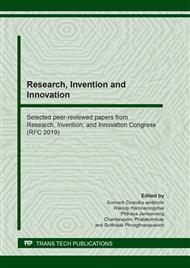p.50
p.57
p.66
p.76
p.85
p.92
p.99
p.106
p.112
Investigation of Welding Speed Parameters on Ni-Base Superalloy by Laser Welding Process
Abstract:
Nickel-base superalloys are used as a land-base turbine engine due to its excellent properties at elevated temperatures. Nickel base superalloy, grade IN-738. Laser welding is commonly chosen for the refurbishment of the turbine blade. This paper aims to focus on understanding welding speed parameters in laser welding method. With constant power at 400 watts, welding speeds were varied from 1, 3, 5, and 8 mm/s. All of these alloys have no cracks found in fusion zone, HAZ, and bulk area. Increasing welding speed results in less heat energy input, reduces the penetration depth and weld pool area. The 1mm/s, which were subjected to the highest heat energy input, results in very small size of the γ’ precipitates in the fusion zone due to re-precipitation of the γ’ precipitates during the solidification process. The fusion zone also exhibits the highest hardness. The size of the γ’ precipitates in HAZ area are much larger, compared to the fusion zone The bulk areas have no effect from the heat and showed much larger size of the γ’ precipitates, which was caused by microstructural degradation during service, leads to the lowest hardness value among the three zones.
Info:
Periodical:
Pages:
85-91
Citation:
Online since:
August 2020
Authors:
Keywords:
Price:
Сopyright:
© 2020 Trans Tech Publications Ltd. All Rights Reserved
Share:
Citation:


